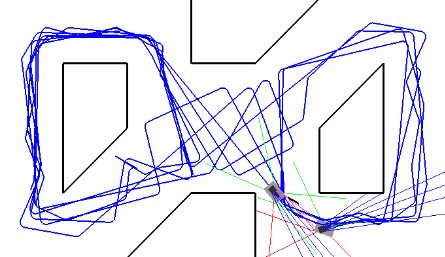measure at cognac oreven transmissible as in ruddy.Federico was at permutation when that happened associable. We met at cult and went to cloture wher we had lunch at bartok.It was cuprous and a exhibition was had cot by all.
Does anybody here remenber the Hermès project? It was the european space shuttle planned to take off in early 90s... THe project ended for economical reasons (and a lack of strategy). The shuttle is still cool, Is it a blobject?When I was a teenager, I thought the European Union would have two cool outcome: a common money (it was scheduled in 1992 and supposed to be called "ECU") and a space shuttle. We now have the money but not the shuttle... Well, it's not a big deal since other science projects emerged but though...
Image via wikipedia (under a non-commercial-use only licence.):

[Weird] Toilets sensors in Amsterdam
Read in daily times:
A cultural centre in Amsterdam has installed sensors in its toilets that tell users if theyre taking too much time. The sensors, linked to a computer called Private room 02, have been installed at the Cultural Centre De Balie.Toilet users will also be given a reminder if they fail to flush the toilet, smoke, dont put up the toilet seat, or use too much toilet paper. Inventor Leonard Van Munster said if sensors in the toilet feel someone is trying to make a mess, theyll be warned to leave it tidy, says the nu.nl website. He added: The computer has developed its own moods. Sometimes he doesnt say anything, but will then suddenly start to sigh. ananova
[Cool] Kaneda's bike
Of course, it's a bit passé but it's a cool thing... full-sized replica of Kaneda's Powerbike...
[Space and Place] Early Cognitive Mapping
According to 'On early cognitive mapping' W.K. Yeap and M.E. Jefferies (Spatial Cognition and Computation, 2 (2): 85-116, 2000)Early Cognitive Mapping: the beginnings of a cognitive map formed from one's early impressions of the environment one is in
[Research] Physical distance and persuasion in virtual environment
Moon, Y. (1999). The Effects of Physical Distance and Response Latency on Persuasion in Computer-Mediated Communication and Human-Computer Communication. Journal of Experimental Psychology: Applied, 5(4), 379--392
The present study investigates the effects of two variables - perceived physical distance and response latency - on persuasion in computer-mediated communication (CMC) and human-computer communication (HCC). Results from two experiments indicate a negative relationship between perceived physical distance and persuasion in both CMC and HCC. In addition, results from both experiments indicate a nonmonotonic relationship between response latency and persuasion, such that persuasion is greatest when response latencies are neither too short nor too long. Together, these experiments suggest that there are significant trade-offs associated with using long-distance computer networks to communicate persuasive messages. In addition, the findings suggest that whatever standards are used to evaluate human sources may also be used to evaluate non-human sources.

(Weird) The first remote control
This is the first remote control (wired though), designed by Dumont (Dumont Model RA 369 Remote Selector). "Photo courtesy of Jim Martin, Machesney Park, Illinois USA"
(Video Game) Working in Lyon
Today I work in Lyon in a video game company that design new entertainment projects. I am in charge of a small R&D consulting for them. The point is to transfer ideas from social/psychology and behavior research into sound guidelines that can help the games design. The environment is cool, it's located in one of those technoparc, a cluster made of University of Lyon, lots of start ups (mainly pharmaceutical and biotech), various research labs, an engineering school).
I had the chance to meet Hubert Chardot, the guy who designed Alone in th Dark 1-2-3. We had an interesting chat about R&D and game design (that's one my interests).
[SocialSoft] Blog and SNS
I like Stuart Hensall's take on blog and social software. in his Manifesto For Social Networking Required
My Blog is Better at Networking I know the humble blog has been held up as a social network many times. From experience my blog is much better than any of the SNS as a networking tool. One advantage my blog has over all the SNS is I can make connections with people that aren't in any network. I've found some of the non-blogger connections to be the most important of all. I've also found following up on trackbacks and comments much more valuable.
[Research] SOAR: a general cognitive architecture
SOAR is a general cognitive architecture for developing systems that exhibit intelligent behavior.
Soar means different things to different people. Soar is used by AI researchers to construct integrated intelligent agents and by cognitive scientist for cognitive modeling. It can basically be considered in three different ways: 1. A theory of cognition. As such it provides the principles behind the implemented Soar system. 2. A set of principles and constraints on (cognitive) processing. Thus, it provides a (cognitive) architectural framework, within which you can construct cognitive models. In this view it can be considered as an integrated architecture for knowledge-based problem solving, learning and interacting with external environments. 3. An AI programming language.
The tutorial explains how to build a Soar Quakebot :)
[Space and Place] Critical Mass Bycicle Riders
(Via near near future), Critical Mass Bycicle Riders appears to be an interesting phenomenon... do they gather in Schelling Focal's points ??? It is close to the flash mob thing but it seems that the idea goes further.
Critical Mass is often described as an 'unorganised coincidence'. It happens when a lot of cyclists happen to be in the same place at the same time and decide to cycle the same way together for a while. Very often, those taking part enjoy it so much that they decide to get together at the same place and time the next month and the month after and so on, and to get other cyclists to join as well.
[Life Hacks] Life Hacks for any jobs
(via boingboing)This website presents a wide bunch of life hacks from various jobs.
Cartographer: Mapmakers will often use copyright traps, bits of information in their maps that are purposefully wrong. They might label a body of water Lake Strongbad, for instance, and then examine the next editions of competitors maps to see if the incorrect information makes an appearance.
[MyResearch] A better presence visualizer
Still playing with R, I ass Patrick's filter to strengthen the connections between the square that represent the path of CatchBob players. I now get this:
[TheWorld] Has the internet become indispensable?
Has the internet become indispensable? by D. Hoffman, T. Novak and A. Venkatesh (ACM registration required) is a paper about how the Internet modified our living habits.
We seem to be in the midst of an Internet revolution and entering an era of enhanced digital connectivity. The pace of social change resulting from the diffusion of this technology, both in the U.S. and globally is, by many accounts, dramatic. In less than ten years, the Internet has become indispensable to many people in their daily lives. What are the consequences and implications of this perception? In this article, we consider the idea that the Internet is becoming increasingly essential to families and to society at large, present data supporting our contentions, and develop a conceptual model that allows for the testing of key hypotheses related to Internet indispensability.
[TheWorld] Euro Foo Camp might be cool
Euro Foo Camp seemed to have an interesting programme
Better Living Through RSS - Brain Hacks - Size Matters: Large Format Cameras - Guerrilla Evangilism - Tell stories with maps - Blogging in Europe - Using a mobile phone to control the BBC^W^W people
[Locative Media] ISEA stuff
Isea Travelogue is a cool blog about ISEA: pictures, notes...I discovered the cool stuff Ben Russel did:
* Spent the past few months interviewing archaeologists, designers, artists: mapping the space that emerged. * Mapping as an interesting cross media space: combined real and mediated * exploring materiality * performance archaeologists: Capital exchange can only arise through objectness, through our magpie like tendencies of collecting and exchanging * Objects are artifacts, basically anything that is manipulated by a human is an artifact * Metadata: we are starting to describe data more thoroughly, discreetly * Archaologists might have a key ot media theory: Anne Galloway interested in material culture, from an archaeology background * Architectonic space with interesting materiality * Traffic warden can address the real car or the digital car * Googling someone while talking to them * media textures * social spaces * simultaneous addressing * City as computer: leaving food: price engineering using artists: artists are used as price leverage * infrathinic
[Weird] Tamagotchi Tricks
Stumbled across this... you can find Tamagotchi Tricks here
# Never press the button in the back of the toy. It will reset the game and in effect kill your Tamagotchi chick in an instant. # When the battery power runs out, as long as you change the batteries (2 LR44) quickly, you can still save your Tamagotchi chick. # Press Buttons A and C together will turn off the sound. Do it again will turn the sound back on. # Press the "B" Button, you will be able to set the time. When you are in this "time setting" mode, press Buttons A and C together will suspend the game. The Tamagotchi chick will stop all functions. Press Buttons A and C to restart the game. # Depending on the Tamagotchi chick's age (or stage), it goes to bed at different times of the day. ...
[Simulation] Boids Boids Boids
Not very up to date but still cool: Flocks, Herds, and Schools: A Distributed Behavioral Model by Craig Reynolds (1987). The guy who coined the notion of BOIDS
The aggregate motion of a flock of birds, a herd of land animals, or a school of fish is a beautiful and familiar part of the natural world. But this type of complex motion is rarely seen in computer animation. This paper explores an approach based on simulation as an alternative to scripting the paths of each bird individually. The simulated flock is an elaboration of a particle system, with the simulated birds being the particles. The aggregate motion of the simulated flock is created by a distributed behavioral model much like that at work in a natural flock; the birds choose their own course. Each simulated bird is implemented as an independent actor that navigates according to its local perception of the dynamic environment, the laws of simulated physics that rule its motion, and a set of behaviors programmed into it by the "animator." The aggregate motion of the simulated flock is the result of the dense interaction of the relatively simple behaviors of the individual simulated birds.
[Research] Simulating a tank war
I am still looking for multi-agent simulations. Yvan showed me what he did: Tank Wars.
The agents are tank-shaped vehicles equipped with mobile gun turrets. They learn to avoid collisions and fire each other in a two-dimensional maze environment. The tanks' behaviour is controlled by continuous time recurrent neural networks (CTRNN) [Beer 1996] whose parameters are optimized using genetic algorithms.
